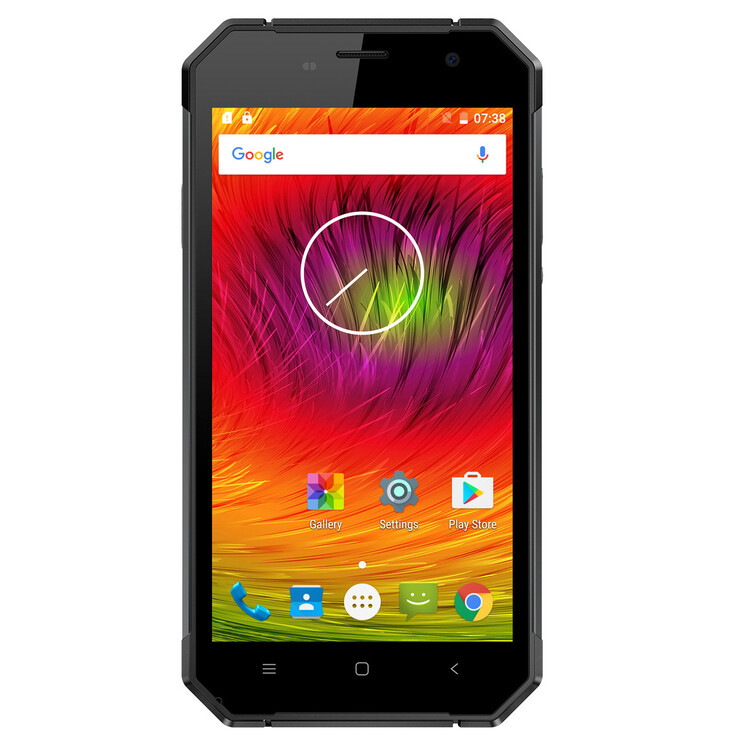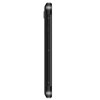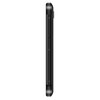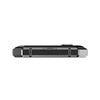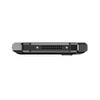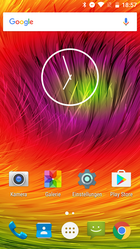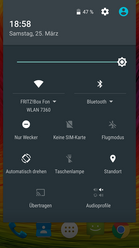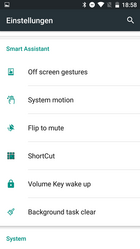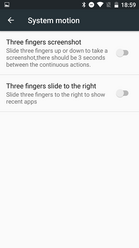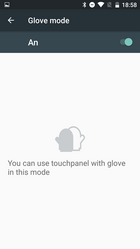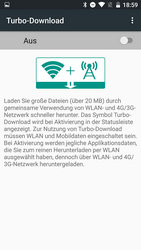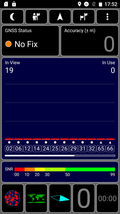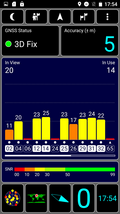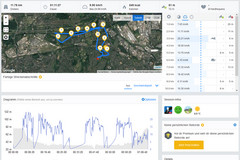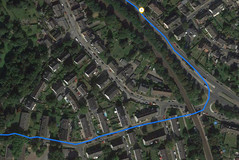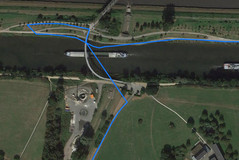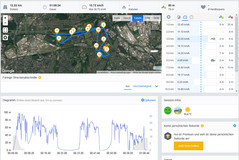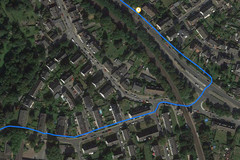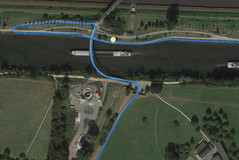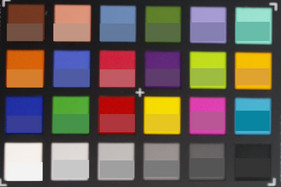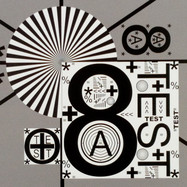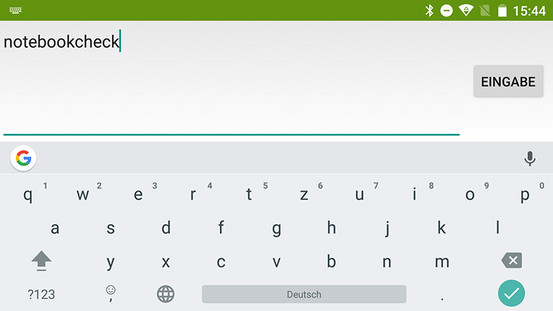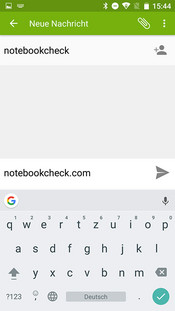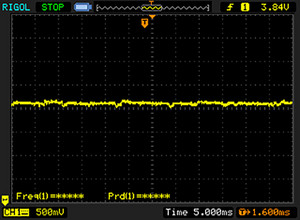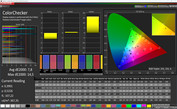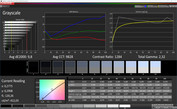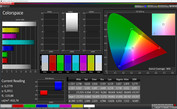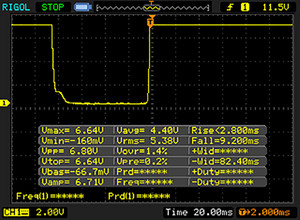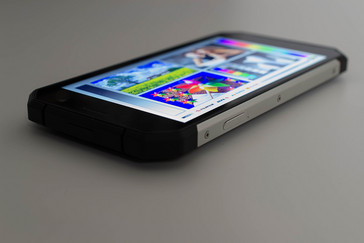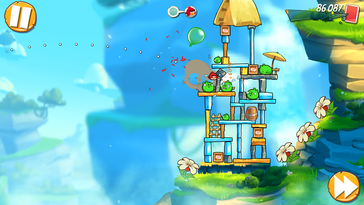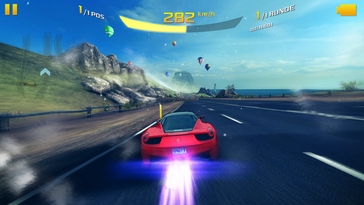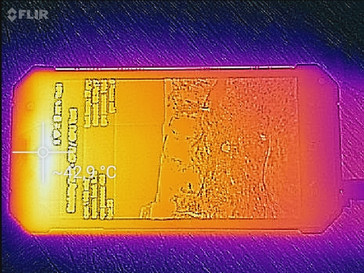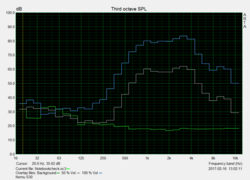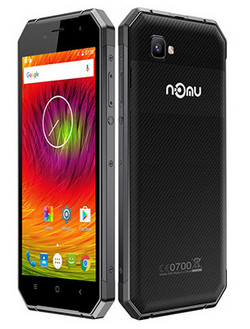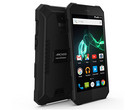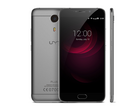Nomu S30 Smartphone Review
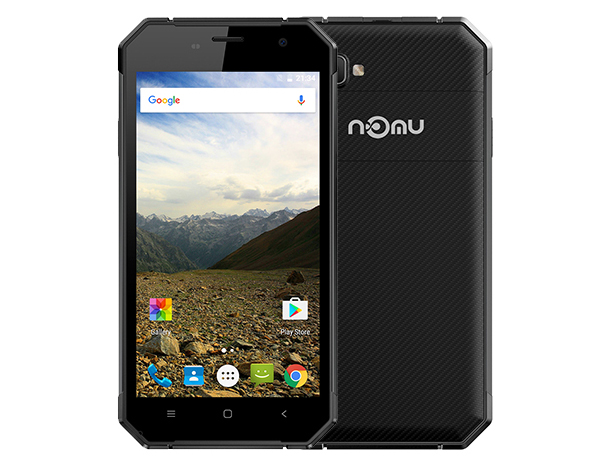
For the original German review, see here.
The Nomu S30 offers an interesting balance between outdoor capabilities, according to the IP68 standard together with Gorilla Glass 4, and extensive technical features in the 260-Euro (~$275) range. Joining the party are a Full HD display, support for European LTE bands, a large battery with the quick-charge function, and more features that aren't necessarily part of this device class. The S30 is Nomu's current flagship, while the sister models (S20 and S10) were technically cut back a little. The exciting question for this test is whether this smartphone succeeds in the balancing act between multimedia capabilities and outdoor suitability.
The manufacturer compares its devices with the Cat S60, though that attracts another buyer segment with its heat-sensitive camera. As direct competitors with outdoor qualities, the Archos 50 Saphir as well as the Samsung Xcover 3 offer themselves. Furthermore, we add the UMI Plus as a comparative device for multimedia usage.
Case
Visually, the Nomu S30 stands out because of the chunky angular exterior which again confirms its area of use. The high weight of 260 grams (0.57 lb) as well as the 13.5-millimeter (0.53 in) casing thickness should be considered. With measurements of 162 x 83 millimeters (~6.4 x 3.3 in), the smartphone is unsuitable for small hands. However, the device does offer a 5.5-inch display, which is a rather singular feature in the outdoor area.
The material used for the casing is a mix of aluminum and titanium, while the back is made from plastic. Adjacent to the aluminum strips on the sides, the top and undersides are rubberized, just as the slightly protruding edges are supposed to protect the display from falls. The S30 is rated according to the IP68 standard, which protects it against prolonged submersion, water, and dust. All the available ports are protected by covers to prevent entry of foreign particles. The Nomu S30 leaves an impression as a stable, stiff, torsion-proof device; even the plastic back hardly creaks.
Features
The extensive features of the device are unusual for an outdoor smartphone. 4 GB RAM and 64 GB memory storage are utilized. The back offers a small notch that provides access to a microSD-card slot and two micro SIM-card slots with LTE support. According to the manufacturer, the storage can be extended by a maximum of 32 GB. In the test, our reference 64 GB storage card (Toshiba Exceria Pro M401) was recognized as well.
Besides the obligatory on/off switch as well as the volume rocker, there is an "SOS button" on the left side of the case. This can be individually configured on the smartphone. You can configure whether an emergency call should be dialed from the first or second SIM card. Besides selecting one of the contacts on the device as emergency number, a desired number can also be preset. The device also offers the standard keys (home, menu, back). In terms of connectivity, you don't need to dispense with anything on the S30. The device is equipped with dual-band WLAN, LTE, GPS, NFC, as well as Bluetooth 4.0. It also has an FM radio on board.
Software
Nomu delivers the S30 with Android 6.0 Marshmallow at the time of delivery with the last security patches having come almost a year ago (05/07/2016). Just before the end of our testing period, the unit received an update to the security patch level from January 2017. Fortunately, Android was implemented almost unchanged on the Nomu S30, so there is no bloatware on the device. The device gets its own flavor via assisting functions, such as a double tap to wake up the unit or a glove mode, which is a useful addition considering where the device is to be used.
Communication and GPS
The Nomu S30 supports the 802.11 a/b/g/n/ac WLAN standards in 2.4 and 5 GHz networks. The connection is held stable, and the send and receive performance is head-to-head with the competing devices. The direct competitor (Archos 50 Saphir) cannot keep up, due to lacking the ac-standard as well as 5 GHz network support. Overall, the speed results are a rather mixed bag despite the ac standard; the Galaxy S7 with the same standard is twice as fast as the Nomu S30.
In case the (home) WLAN net is out of reach, the S30 also provides LTE support for the German net. The smartphone supports LTE Cat. 6 and receives signals in the standard frequency bands (800, 900, 1800, 2100 and 2600 MHz). For fast downloads, the Nomu S30 offers the "Turbo-Download" option, where the mobile communication can be combined with the WLAN connection.
| Networking | |
| iperf3 transmit AX12 | |
| Samsung Galaxy S7 | |
| Nomu S30 | |
| Archos 50 Saphir | |
| UMI Plus | |
| iperf3 receive AX12 | |
| Samsung Galaxy S7 | |
| Nomu S30 | |
| Archos 50 Saphir | |
| UMI Plus | |
The location is determined by the GPS via compass support. However, inside the building the location could not be detected. Outside, the GPS test verifies an accuracy of five meters, a value that is quite good, whereas the direct competition locates to some extent even more precisely. To further evaluate the outdoor qualities, we took the device on a bike ride. The comparison with the professional Garmin Edge 500 navigation system shows a total discrepancy of about 400 meters in the 12-km (~7.5 miles) test route. In that, the Nomo S30 allowed itself clear shortcuts at two important places. Though the location detection is sufficient for everyday use, especially for an outdoor device, the expectation was higher due to the manufacturer's advertising.
Telephone and Call Quality
The phone app corresponds to the standard Google app and does not distinguish itself with further special functions. Making phone calls with the Nomu S30 is completely convincing. Overall, spoken words arrive through the earpiece intelligible, loud, and clear. The speaker is loud enough as well, and our voice is recorded sufficiently strong by the microphone. The S30's mastery in filtering out external noises is limited, and when there are loud external noises, the call quality suffers considerably.
Cameras
The camera in front takes pictures up to 5 MP or interpolates them to 8 MP. The test picture on the right was taken under optimal conditions. Though the color nuances are easy to see, the font camera lacks richness of detail overall. Under bad lighting conditions, there is a considerable amount of noise.
The main camera is equipped with a Sony IMX214 sensor with an f/2.0 aperture. The resolution is 13 MP, which is interpolated to 16 MP. Video can be recorded with a maximum resolution of 1920x1080 pixels (Full HD, 30 fps). In comparison to the reference images, blurred details as well as a rather dim and washed-out image stand out. Overall, the main camera is well-suited for some snapshots, where the richness of landscape colors can only be captured to a limited extent by the device.
In addition, we evaluate the rear camera with images from our test lab under controlled light conditions. As we found out before, the device loses the details close to the edges but reproduces the center of the photo quite clearly. Overall, the sharpness is okay under controlled light conditions. Though in ColorChecker Passport, the colors are displayed oversaturated, the white balance convinces.
Accessories and Warranty
The delivery contents include a charging cable and the related charger. There are also the obligatory directions and quick-start instructions. Further manufacturer accessories are not available. The Nomu S30 is distributed by third-party vendors, who may each individually interpret the warranty. With some vendors, additional importing costs have to be calculated. Nomu offers a 12-month warranty. Please see our Guarantees, Return policies and Warranties FAQ for country-specific information.
Input Devices and Handling
Nomu uses Google's virtual keyboard called Gboard. The keyboard supports the usual functions such as swipe input and spelling corrections. The touchscreen recognizes up to five inputs simultaneously, which is a value suitable in practice. Typing feels precise and also fast input is recognized without problems most of the time. In a few cases, the input stuttered which can probably be ascribed to limited multi-touch support.
At the bottom of the display, the S30 provides the standard Android function keys in the form of touch buttons. The power button and volume rocker are dedicated buttons on the right side, while a freely configurable SOS-button is on the left side. Though the buttons offer an acceptable pressure point, they are very small overall, which makes operating them with gloves almost impossible. In contrast, glove mode works very well, recognizing most inputs without problems. The unit can be locked with a pattern, a PIN, via voice input, or a conventional password. There is no fingerprint sensor, however.
Display
Nomu equips the S30 with a 5.5 inch IPS display. Fortunately, the resolution is 1920x1080 pixels, which underlines its multimedia features in comparison to the outdoor competition. The S30 achieves a pixel density of 401 dpi, which always produces a clear image in displaying the content.
In the initial measurements, the outdoor smartphone leaves a good impression. We determine an average brightness of 421.1 cd/m² as well as a maximum brightness of 431 cd/m². The brightness distribution is at 93% and with that, almost exemplary. The illumination in the left and center bottom areas is less strong. Compared to the outdoor competition, the S30 scores mostly with the FHD display and the brightness at the same level. Only the Archos 50 Saphir glows considerably brighter.
| |||||||||||||||||||||||||
Brightness Distribution: 93 %
Center on Battery: 423 cd/m²
Contrast: 1627:1 (Black: 0.26 cd/m²)
ΔE ColorChecker Calman: 7.8 | ∀{0.5-29.43 Ø4.78}
ΔE Greyscale Calman: 9.8 | ∀{0.09-98 Ø5}
Gamma: 2.32
CCT: 9828 K
| Nomu S30 IPS, 1920x1080, 5.5" | Samsung Galaxy S7 SAMOLED, 2560x1440, 5.1" | Archos 50 Saphir IPS, 1280x720, 5" | UMI Plus LTPS, 1920x1080, 5.5" | Samsung Galaxy Xcover 3 IPS, 800x480, 4.5" | |
|---|---|---|---|---|---|
| Screen | 34% | -38% | 19% | -10% | |
| Brightness middle (cd/m²) | 423 | 350 -17% | 545 29% | 432.8 2% | 452 7% |
| Brightness (cd/m²) | 421 | 351 -17% | 527 25% | 430 2% | 436 4% |
| Brightness Distribution (%) | 93 | 98 5% | 87 -6% | 86 -8% | 91 -2% |
| Black Level * (cd/m²) | 0.26 | 0.58 -123% | 0.232 11% | 0.53 -104% | |
| Contrast (:1) | 1627 | 940 -42% | 1866 15% | 853 -48% | |
| Colorchecker dE 2000 * | 7.8 | 2.04 74% | 12.5 -60% | 4.93 37% | 5.71 27% |
| Colorchecker dE 2000 max. * | 14.5 | 3.25 78% | 24.4 -68% | 8.34 42% | |
| Greyscale dE 2000 * | 9.8 | 1.63 83% | 15.4 -57% | 5.18 47% | 5.02 49% |
| Gamma | 2.32 95% | 2.07 106% | 1.87 118% | 2.4 92% | 2.15 102% |
| CCT | 9828 66% | 6391 102% | 12705 51% | 7461 87% | 7441 87% |
| Color Space (Percent of AdobeRGB 1998) (%) | 86.86 | ||||
| Color Space (Percent of sRGB) (%) | 99.35 |
* ... smaller is better
Screen Flickering / PWM (Pulse-Width Modulation)
| Screen flickering / PWM not detected | |||
In comparison: 53 % of all tested devices do not use PWM to dim the display. If PWM was detected, an average of 8111 (minimum: 5 - maximum: 343500) Hz was measured. | |||
At 0.26 cd/m², the black value is very good, which also makes for a good contrast of 1627:1. An even distribution of lighter and darker areas on the display, factoring in the more practical APL measurement (Average Picture Level / APL 50), resulted in a weaker but still good contrast of 1377:1 (brightness 431 cd/m²). Compared to the competition, the screen has a relatively strong blue tint. The DeltaE-2000 deviations of the grayscale and colors in comparison to the sRGB reference space turn out high as well.
Display Response Times
| ↔ Response Time Black to White | ||
|---|---|---|
| 12 ms ... rise ↗ and fall ↘ combined | ↗ 2.8 ms rise | |
| ↘ 9.2 ms fall | ||
| The screen shows good response rates in our tests, but may be too slow for competitive gamers. In comparison, all tested devices range from 0.1 (minimum) to 240 (maximum) ms. » 30 % of all devices are better. This means that the measured response time is better than the average of all tested devices (20.2 ms). | ||
| ↔ Response Time 50% Grey to 80% Grey | ||
| 33.6 ms ... rise ↗ and fall ↘ combined | ↗ 16.4 ms rise | |
| ↘ 17.2 ms fall | ||
| The screen shows slow response rates in our tests and will be unsatisfactory for gamers. In comparison, all tested devices range from 0.165 (minimum) to 636 (maximum) ms. » 45 % of all devices are better. This means that the measured response time is similar to the average of all tested devices (31.6 ms). | ||
Thanks to the relatively high brightness, which can also be adjusted automatically, the Nomu S30 can be read easily outdoors. The display convinces even in direct sunlight. The viewing angles of the IPS screen are very stable, and only from a very wide viewing angle is the contrast slightly diminished.
Performance
The Helio P10 MT6755 SoC, which is mostly deployed in mainstream smartphones, was implemented in the Nomu S30. The processor is based on the 64-bit architecture and clocks at a 2 GHz maximum. The direct competitor UMI Plus is also equipped with the octa-core SoC but falls back slightly in the synthetic benchmarks.
The ARM Mali T860 MP2 integrated graphics offers two computing cores and goes head-to-head with the Adreno 405 or smaller Mali -T628 variant, depending on the benchmark. Paired with 4 GB of RAM, the power is suitable for the occasional gaming session with medium graphics settings. The direct competition, in the form of the Archos 50 Saphir and the Samsung Galaxy Xcover 3, is clearly inferior to the Nomu S30 in terms of performance.
In comparison to the competitors, the transfer rates of the integrated microSD-card reader are acceptable. Determined with a Toshiba Exceria Pro M401 microSD card for testing, the sequential read and write rates are around 37 MB/s and 22 MB/s, respectively, on average, while for the microSD card maximal read and write rates of 90 and 80 MB/s, respectively, are specified. Only the Samsung Galaxy S7 reference unit achieves the full speed specified by the manufacturer Toshiba.
| AnTuTu v6 - Total Score (sort by value) | |
| Nomu S30 | |
| Archos 50 Saphir | |
| UMI Plus | |
| Samsung Galaxy S7 | |
| Geekbench 4.0 | |
| 64 Bit Single-Core Score (sort by value) | |
| Nomu S30 | |
| Archos 50 Saphir | |
| UMI Plus | |
| 64 Bit Multi-Core Score (sort by value) | |
| Nomu S30 | |
| Archos 50 Saphir | |
| UMI Plus | |
| GFXBench (DX / GLBenchmark) 2.7 | |
| T-Rex Onscreen (sort by value) | |
| Nomu S30 | |
| Archos 50 Saphir | |
| Samsung Galaxy S7 | |
| Samsung Galaxy Xcover 3 | |
| 1920x1080 T-Rex Offscreen (sort by value) | |
| Nomu S30 | |
| Archos 50 Saphir | |
| Samsung Galaxy S7 | |
| Samsung Galaxy Xcover 3 | |
| GFXBench 3.0 | |
| on screen Manhattan Onscreen OGL (sort by value) | |
| Nomu S30 | |
| Archos 50 Saphir | |
| Samsung Galaxy S7 | |
| Samsung Galaxy Xcover 3 | |
| 1920x1080 1080p Manhattan Offscreen (sort by value) | |
| Nomu S30 | |
| Archos 50 Saphir | |
| Samsung Galaxy S7 | |
| Samsung Galaxy Xcover 3 | |
| GFXBench 3.1 | |
| on screen Manhattan ES 3.1 Onscreen (sort by value) | |
| Nomu S30 | |
| Archos 50 Saphir | |
| Samsung Galaxy S7 | |
| 1920x1080 Manhattan ES 3.1 Offscreen (sort by value) | |
| Nomu S30 | |
| Archos 50 Saphir | |
| Samsung Galaxy S7 | |
| PCMark for Android - Work performance score (sort by value) | |
| Nomu S30 | |
| UMI Plus | |
| Samsung Galaxy S7 | |
| Octane V2 - Total Score (sort by value) | |
| Nomu S30 | |
| Archos 50 Saphir | |
| UMI Plus | |
| Samsung Galaxy S7 | |
| Samsung Galaxy Xcover 3 | |
| Mozilla Kraken 1.1 - Total (sort by value) | |
| Nomu S30 | |
| Archos 50 Saphir | |
| UMI Plus | |
| Samsung Galaxy S7 | |
| AndroBench 3-5 | |
| Sequential Write 256KB SDCard (sort by value) | |
| Nomu S30 | |
| Archos 50 Saphir | |
| UMI Plus | |
| Samsung Galaxy S7 | |
| Sequential Read 256KB SDCard (sort by value) | |
| Nomu S30 | |
| Archos 50 Saphir | |
| UMI Plus | |
| Samsung Galaxy S7 | |
| Random Write 4KB (sort by value) | |
| Nomu S30 | |
| Archos 50 Saphir | |
| UMI Plus | |
| Samsung Galaxy S7 | |
| Samsung Galaxy Xcover 3 | |
| Random Read 4KB (sort by value) | |
| Nomu S30 | |
| Archos 50 Saphir | |
| UMI Plus | |
| Samsung Galaxy S7 | |
| Samsung Galaxy Xcover 3 | |
| Sequential Write 256KB (sort by value) | |
| Nomu S30 | |
| Archos 50 Saphir | |
| UMI Plus | |
| Samsung Galaxy S7 | |
| Samsung Galaxy Xcover 3 | |
| Sequential Read 256KB (sort by value) | |
| Nomu S30 | |
| Archos 50 Saphir | |
| UMI Plus | |
| Samsung Galaxy S7 | |
| Samsung Galaxy Xcover 3 | |
| JetStream 1.1 - Total Score (sort by value) | |
| Nomu S30 | |
| Archos 50 Saphir | |
| UMI Plus | |
| Samsung Galaxy S7 | |
* ... smaller is better
Games
Non-demanding games such as Angry Birds 2 run absolutely fluidly and without problems on the Nomu S30. The graphically demanding Asphalt 8 race game can be played in the default settings without problems. But as soon as the demand is increased and the graphics settings are set on "high," fluid gaming sessions become impossible. With medium detail level, the Nomu S30 feels the most comfortable, since the battery capacity fades away relatively slowly as well. The precise control using the position sensor and the quick-reacting touchscreen contribute to an almost unfettered gaming experience.
Emissions
Temperature
Due to the position of the internal battery, the bottom part of the device gets warmer than the other areas. Heating up of the bottom front area to a maximal 33.8 °C (~93 °F) can be observed already during idle operation. During full load, this value rises to a maximal 42.3 °C (~108 °F). In that, the back always remains cooler than the front and never becomes uncomfortable to hold.
(±) The maximum temperature on the upper side is 42.3 °C / 108 F, compared to the average of 35.2 °C / 95 F, ranging from 21.9 to 247 °C for the class Smartphone.
(+) The bottom heats up to a maximum of 39.5 °C / 103 F, compared to the average of 34 °C / 93 F
(+) In idle usage, the average temperature for the upper side is 31 °C / 88 F, compared to the device average of 32.9 °C / 91 F.
Speaker
Nomu advertises the high volume and good quality of the built-in speaker, which is supposed to play on a hi-fi level overall. In this statement, we can only confirm the relatively high volume, which can however only be used to a limited extent before it becomes uncomfortable due to the high frequency tuning. Because of unbalanced mids and bass, the Nomu is rather less suitable for playing music as well. The reproduction of voice during calls or navigation is well-acceptable, though.
Nomu S30 audio analysis
(+) | speakers can play relatively loud (90.8 dB)
Bass 100 - 315 Hz
(-) | nearly no bass - on average 28.4% lower than median
(+) | bass is linear (6.8% delta to prev. frequency)
Mids 400 - 2000 Hz
(±) | higher mids - on average 11.1% higher than median
(±) | linearity of mids is average (9.8% delta to prev. frequency)
Highs 2 - 16 kHz
(±) | higher highs - on average 9.7% higher than median
(±) | linearity of highs is average (9.5% delta to prev. frequency)
Overall 100 - 16.000 Hz
(-) | overall sound is not linear (33% difference to median)
Compared to same class
» 83% of all tested devices in this class were better, 1% similar, 15% worse
» The best had a delta of 11%, average was 35%, worst was 134%
Compared to all devices tested
» 92% of all tested devices were better, 1% similar, 7% worse
» The best had a delta of 4%, average was 24%, worst was 134%
Archos 50 Saphir audio analysis
(+) | speakers can play relatively loud (89.8 dB)
Bass 100 - 315 Hz
(-) | nearly no bass - on average 20.4% lower than median
(±) | linearity of bass is average (8.7% delta to prev. frequency)
Mids 400 - 2000 Hz
(+) | balanced mids - only 3.9% away from median
(+) | mids are linear (4% delta to prev. frequency)
Highs 2 - 16 kHz
(+) | balanced highs - only 1.9% away from median
(+) | highs are linear (4.8% delta to prev. frequency)
Overall 100 - 16.000 Hz
(+) | overall sound is linear (14.7% difference to median)
Compared to same class
» 2% of all tested devices in this class were better, 2% similar, 96% worse
» The best had a delta of 11%, average was 35%, worst was 134%
Compared to all devices tested
» 18% of all tested devices were better, 4% similar, 77% worse
» The best had a delta of 4%, average was 24%, worst was 134%
UMI Plus audio analysis
(+) | speakers can play relatively loud (84.3 dB)
Bass 100 - 315 Hz
(-) | nearly no bass - on average 27.4% lower than median
(+) | bass is linear (5.5% delta to prev. frequency)
Mids 400 - 2000 Hz
(±) | higher mids - on average 8.6% higher than median
(±) | linearity of mids is average (12.7% delta to prev. frequency)
Highs 2 - 16 kHz
(±) | higher highs - on average 12.9% higher than median
(±) | linearity of highs is average (12.9% delta to prev. frequency)
Overall 100 - 16.000 Hz
(-) | overall sound is not linear (42.2% difference to median)
Compared to same class
» 86% of all tested devices in this class were better, 0% similar, 13% worse
» The best had a delta of 11%, average was 35%, worst was 134%
Compared to all devices tested
» 95% of all tested devices were better, 0% similar, 5% worse
» The best had a delta of 4%, average was 24%, worst was 134%
Frequency diagram in comparison (checkboxes above are selectable!)
Energy Management
Power Consumption
During idle, the Nomu S30 permits itself a maximum of 2.35 watts and with that, it consumes slightly more than the competition. Similarly under maximum load, although the smartphone consumed less than the Archos 50 Saphir, compared to all the other devices the consumption was almost 20% higher.
| Off / Standby | |
| Idle | |
| Load |
|
Key:
min: | |
| Nomu S30 5000 mAh | Archos 50 Saphir 5000 mAh | UMI Plus 4000 mAh | Samsung Galaxy Xcover 3 mAh | |
|---|---|---|---|---|
| Power Consumption | 4% | -61% | 42% | |
| Idle Minimum * (Watt) | 0.93 | 0.65 30% | 2.6 -180% | 0.6 35% |
| Idle Average * (Watt) | 2.31 | 1.9 18% | 3.2 -39% | 1.2 48% |
| Idle Maximum * (Watt) | 2.35 | 2.05 13% | 3.3 -40% | 1.3 45% |
| Load Average * (Watt) | 4.57 | 6.14 -34% | 7.7 -68% | 2.6 43% |
| Load Maximum * (Watt) | 6.1 | 6.54 -7% | 4.8 21% | 3.6 41% |
* ... smaller is better
Runtime
Nomu equips the S30 with a 5000 mAh battery. Only the competing Archos 50 Saphir has a similar battery capacity. The endurance of the S30 is at a good level, although the Archos lasts longer but isn't equipped with a similarly powerful hardware. During WLAN use, the smartphone lasts almost 14 hours with the brightness at around 40% (150 cd/m²). In everyday use, two to three days is quite possible.
The battery is charged with MediaTek's pump-express technology, which makes the device fully fit for service in approx. two-and-a-half hours.
| Nomu S30 5000 mAh | Archos 50 Saphir 5000 mAh | UMI Plus 4000 mAh | Samsung Galaxy Xcover 3 mAh | |
|---|---|---|---|---|
| Battery runtime | 17% | -32% | -40% | |
| WiFi v1.3 (h) | 13.9 | 16.2 17% | 9.4 -32% | 8.4 -40% |
| Reader / Idle (h) | 22 | 16.7 | ||
| Load (h) | 4.9 | 2.8 | ||
| H.264 (h) | 11.3 |
Pros
Cons
Verdict
The outdoor smartphone by Nomu is aimed at users looking for a device that, beyond everyday usage, allows taking it for trips outside without having to worry that it might get damaged by the outside elements. This is ensured by features such as an IP68 rating, Gorilla Glass 4, and capped-off ports. In addition, Nomu equips the S30 with a wealth of technical features such as LTE support, which is combined with a powerful SoC that disqualifies all the other outdoor devices in this regard. Despite the powerful performance for this device-class, the long-lasting battery rarely abandons the user.
Outclasses the competition, but not suited for everyone!
Conflicting with the otherwise successful features and implementation are the missing, cut-off display corners, that limit the protection of the front. The multimedia usage seems similarly contradictory, because the device is not only heavy, but it is also bulky, which limits gaming sessions to users with big hands among other things.
Nomu S30
- 04/04/2017 v6 (old)
Benjamin Gärtner




